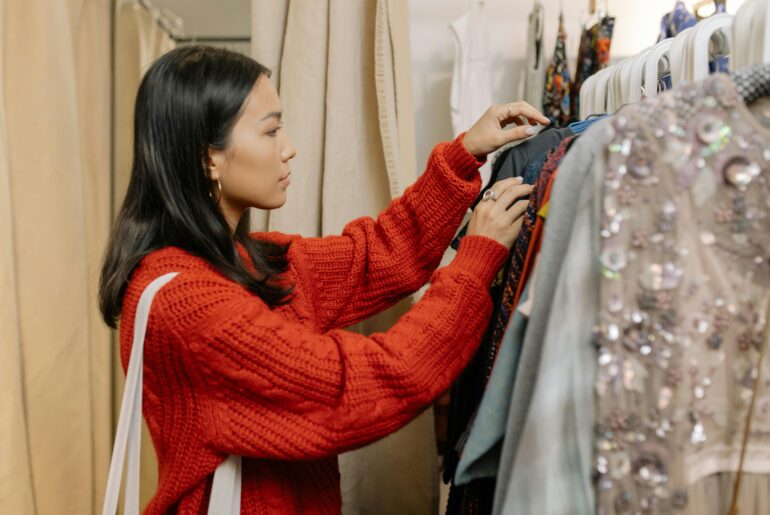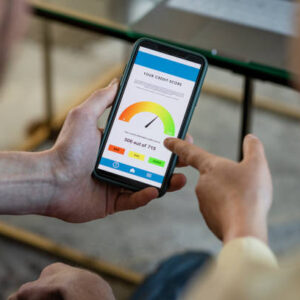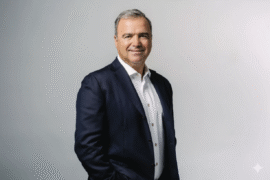This article may contain references to products or services from one or more of our advertisers or partners. We may receive compensation when you click on links to those products or services. Nonetheless, our opinions are our own.
The information presented in this article is accurate to the best of our knowledge at the time of publication. However, information is subject to change, and no guarantees are made about the continued accuracy or completeness of this content after its publication date.
- Retail Therapy: Are your emotions draining your wallet?
- The Emotional Triggers Behind Your Spending Habits
- Identifying the Signs of Emotional Spending and Its Impact on Your Finances
- Practical Strategies to Manage Your Emotions Without Shopping
- Building a Budget That Reflects Your Values and Priorities
- Retail Therapy vs. Shopping Addiction
- Frequently Asked Questions
- What practical steps can I take to reduce impulse spending on clothes?
- How can I be more mindful of what I already own to curb the desire to buy more?
- How can I shift my mindset from being a “collector” to a more intentional consumer?
- How can I approach secondhand shopping without succumbing to the trap of overbuying?
- What can I do with clothes I already own but don’t wear?
- How can I make the act of purchasing more intentional and less emotional?
- Recommended Reads
Retail Therapy: Are your emotions draining your wallet?
Have you ever walked through a store feeling sad and then left with a lot of shopping bags but less money? You are not alone. Retail therapy means shopping to feel better. Many people use this method to handle life’s challenges. However, even though new shoes or the latest gadget can give you a short lift, it’s important to ask: Are you really dealing with your feelings or just hiding them with stuff?
We will help you find out if your emotions are quietly hurting your finances. We will also share ways for you to manage both your feelings and your money better.
The Emotional Triggers Behind Your Spending Habits
Have you ever been in a store and grabbed things you didn’t plan to buy because of a sudden feeling? Knowing what drives your feelings can help you see patterns you might not notice. You may shop when you’re stressed, bored, or happy. Each of these feelings can make you take out your wallet. This can lead you to buy things on impulse that feel good for a moment but won’t truly satisfy you in the long run. Realizing these feelings is the first step to taking back control of your money.
Consider writing a simple shopping diary to track what you buy and how you feel when you buy it. This can show surprising links between your emotions and your shopping habits. It can help you see when and why you feel the need for retail therapy.
Identifying the Signs of Emotional Spending and Its Impact on Your Finances
Recognizing the signs of emotional spending is a step to taking back control of your money. If you often feel the urge to get your wallet when you are stressed, bored, or happy, take a moment to think about it.
Here are some common signs of emotional spending:
- Impulse Purchases: Do you sometimes buy things just because they look nice, without thinking if you actually need them?
- Retail Therapy Rituals: Is shopping your favorite way to celebrate or deal with stress, only to feel sorry for your purchases afterward?
- Emotional Justifications: Do you tell yourself that buying something will make you feel better or that you earned it, even if it does not fit your budget?
These patterns can add up and cause big money problems. They can reduce your savings and make your debt higher. For example, look at the table below that shows how much emotional spending could affect you each year:
| Type of Purchase | Average Monthly Spend | Yearly Impact |
|---|---|---|
| Coffee Shop Treats | $100 | $1,200 |
| Impulse Apparel | $200 | $2,400 |
| Gadgets and Tech | $150 | $1,800 |
Monthly emotional spending can add up to thousands of dollars that you may waste. This practice can hurt your financial goals. When you notice these habits, you can change them. This helps you redirect those feelings and find better ways to cope.
Voted "Best Overall Budgeting App" by Forbes and WSJ
Monarch Money helps you budget, track spending, set goals, and plan your financial future—all in one app.
Get 50% OFF your first year with code MONARCHVIP
Practical Strategies to Manage Your Emotions Without Shopping
It’s simple to start shopping when you’re feeling strong emotions. However, there are better ways to handle those feelings without spending money. Think about trying these methods to help you feel better:
- Practice Mindfulness: Try mindfulness techniques like deep breathing or meditation. These can help you notice your feelings without letting them control what you do.
- Journaling: Write down your thoughts and feelings. This can help you understand your emotions better instead of hiding them with shopping.
- Physical Activity: Take a walk, go for a run, or do a workout at home. Exercise can release endorphins that boost your mood and keep your mind off shopping.
- Connect with Nature: Spend time outside. A change in your surroundings can give you a fresh perspective.
- Talk It Out: A chat with a friend or family member can help. Sharing how you feel can feel good and won’t cost you anything.
The aim is to create a set of tools to help your mental health while also protecting your finances.
Reflect on why you’re spending money, especially with online shopping
When it comes to addressing any underlying emotional triggers, one of the most important steps is to reflect on the reasons behind your spending of money, particularly when it comes to online shopping. Consider journaling about your feelings and thoughts surrounding your spending habits to gain insight into what drives you to shop. Practice mindfulness techniques to become more aware of your emotions and impulses when the urge to spend arises. Engaging in physical activity can also help release stress and boost your mood, offering an alternative way to cope with negative emotions. Remember, connecting with nature or talking it out with a friend can provide support without the need for retail therapy.
Spending money to improve your mood: healthier alternatives
Spending money to improve your mood may provide temporary relief, but it’s important to explore healthier alternatives that offer long-term benefits. Instead of relying on retail therapy, consider incorporating mindfulness practices into your daily routine. This can help you become more self-aware and reduce stress levels naturally. Journaling is another powerful tool that facilitates emotional processing and provides a safe space for reflection. Engaging in physical activities not only enhances your mood but also boosts your energy levels, promoting overall well-being. Connecting with nature allows you to find calmness and gain perspective amidst life’s challenges.
Give yourself time
Give yourself time to explore different activities and hobbies that bring you joy and fulfillment without the need for spending money. Embrace creativity through art, music, or cooking, discovering new avenues for self-expression and relaxation. Consider volunteering or helping others in need to experience the profound sense of purpose and satisfaction it brings. Cultivate meaningful relationships with loved ones and prioritize self-care practices to nurture your mental and emotional well-being. Remember, true happiness doesn’t come from material possessions but from within, fueled by genuine connections and personal growth.
Building a Budget That Reflects Your Values and Priorities
To make a strong financial plan, your budget should match what is important to you. Begin by figuring out your main values, like travel, family, education, or helping your community. Knowing this helps you put your money where it matters most.
Think about dividing your spending into groups. These groups should show what matters most to you:
| Category | Monthly Budget | Current Spending |
|---|---|---|
| Essentials | $1,500 | $1,450 |
| Values-Driven Spending | $300 | $350 |
| Discretionary | $200 | $250 |
Tracking your spending and making changes can help you feel happier and prevent impulse buys. Budgeting is not just about limits; it is about giving yourself the power to make choices that help you live a fuller and more meaningful life.
Retail Therapy vs. Shopping Addiction
Retail therapy is commonly seen as a way to lift one’s spirits and find solace during difficult times by indulging in shopping for items that spark joy and temporarily alleviate stress. However, it is important to distinguish between retail therapy and shopping addiction. While retail therapy involves occasional splurges that bring temporary happiness, shopping addiction is characterized by compulsive and excessive spending that negatively impacts one’s financial health and emotional well-being. The difference lies in the intention behind the behavior and its consequences.
| Feature | Retail Therapy | Shopping Addiction (Compulsive Buying Disorder) |
|---|---|---|
| Definition | The act of shopping to improve mood or alleviate stress. | A behavioral addiction characterized by excessive, repetitive purchasing that leads to distress or impairment. |
| Motivation | Temporary mood boost, stress relief, self-reward. | Uncontrollable urge, emotional coping mechanism, seeking a “high.” |
| Emotional Impact | Temporary positive feelings, sense of control. | Cycle of guilt, shame, anxiety, and financial distress. |
| Frequency & Extent | Occasional moderate spending. | Frequent, excessive spending beyond financial means. |
| Control | Conscious, planned purchases (sometimes impulsive). | Lack of control, impulsive purchases despite negative consequences. |
| Consequences | Potential for overspending, but generally manageable. | Significant financial debt, relationship problems, emotional distress. |
| Psychological Basis | May involve emotional regulation, but not necessarily pathological. | Classified as a behavioral addiction, it often co-occurs with other mental health conditions. |
| Recognition as a Disorder | Not a recognized mental health disorder. | Considered a behavioral addiction or impulse control disorder. |
| Treatment | Typically not needed, unless it becomes problematic. | Therapy (CBT), support groups, medication (in some cases). |
| Difference | A temporary mood boost using shopping. | A disorder where shopping is used as a maladaptive coping mechanism. |
Similarities Between Retail Therapy and Substance Use Disorder
Retail therapy, often seen as a harmless way to lift one’s spirits through shopping, can sometimes border on addiction. The allure of acquiring new possessions to combat negative emotions can lead to compulsive spending habits that mirror those found in substance use disorders. Similarities between retail therapy and substance use disorder can be seen in the loss of control over behavior, seeking temporary relief from emotional distress, and experiencing guilt or shame afterward. Recognizing the fine line between occasional indulgence and harmful behavior is vital for maintaining emotional well-being and financial stability.
Frequently Asked Questions
What practical steps can I take to reduce impulse spending on clothes?
Implement strategies to create friction between the urge to buy and the actual purchase. Unsubscribe from promotional emails and unfollow shopping-related accounts on social media. Avoid browsing shopping websites, especially when you’re bored or stressed. Set a waiting period (e.g., the 30/30 rule: wait 30 hours for items over $30) before making a purchase. Remove saved credit card information from online accounts and avoid shopping when you are hungry, angry, lonely, or tired (HALT).
How can I be more mindful of what I already own to curb the desire to buy more?
Take inventory of your existing wardrobe. Use an app or create a spreadsheet to track what you own and what you wear. Seeing your clothes in one place helps you appreciate what you have and identify gaps or needs more accurately. Try remixing outfits and experimenting with different combinations to maximize the versatility of your current wardrobe.
How can I shift my mindset from being a “collector” to a more intentional consumer?
Adopt the mindset of a curator rather than a collector. Instead of accumulating items indiscriminately, focus on selecting high-quality, timeless pieces that align with your personal style and serve a specific purpose in your wardrobe. Be discerning about what you bring into your life and consider the long-term value and use of each item. Treat your collection like art, fewer, more special items.
How can I approach secondhand shopping without succumbing to the trap of overbuying?
Set rules for yourself before heading to the thrift store. Create a shopping list of specific items you need and stick to it. Only buy items that fit well and align with your personal style. Evaluate each purchase based on how often you’ll wear it and whether it fills a genuine need in your wardrobe.
What can I do with clothes I already own but don’t wear?
Consider selling or donating clothes you no longer wear or need. Organize a clothing swap with friends or family. Upcycle or repurpose old clothes into new items or projects. By decluttering your wardrobe, you create space for the items you truly love and use, reducing the urge to buy more.
How can I make the act of purchasing more intentional and less emotional?
Treat shopping as a transaction rather than an emotional experience. Before buying an item, ask yourself if it is a need or a want. Determine the stylistic niche it will fill within your wardrobe. Think about the practicality of the piece within your overall wardrobe. Consider its environmental impact. Also, ensure you can picture multiple scenarios where you would wear it. Is it worth the time, money, and energy to care for it? Focus on making conscious, deliberate choices based on your values and priorities.

Reviewed and edited by Albert Fang.
See a typo or want to suggest an edit/revision to the content? Use the contact us form to provide feedback.
At FangWallet, we value editorial integrity and open collaboration in curating quality content for readers to enjoy. Much appreciated for the assist.
Did you like our article and find it insightful? We encourage sharing the article link with family and friends to benefit as well - better yet, sharing on social media. Thank you for the support! 🍉
Article Title: Retail Therapy: How Emotional Spending Is Draining Your Wallet
https://fangwallet.com/2025/06/15/retail-therapy-how-emotional-spending-is-draining-your-wallet/The FangWallet Promise
FangWallet is an editorially independent resource - founded on breaking down challenging financial concepts for anyone to understand since 2014. While we adhere to editorial integrity, note that this post may contain references to products from our partners.
The FangWallet promise is always to have your best interest in mind and be transparent and honest about the financial picture.
Become an Insider

Subscribe to get a free daily budget planner printable to help get your money on track!
Make passive money the right way. No spam.
Editorial Disclaimer: The editorial content on this page is not provided by any of the companies mentioned. The opinions expressed here are the author's alone.
The content of this website is for informational purposes only and does not represent investment advice, or an offer or solicitation to buy or sell any security, investment, or product. Investors are encouraged to do their own due diligence, and, if necessary, consult professional advising before making any investment decisions. Investing involves a high degree of risk, and financial losses may occur including the potential loss of principal.
Source Citation References:
+ Inspo
There are no additional citations or references to note for this article at this time.












































